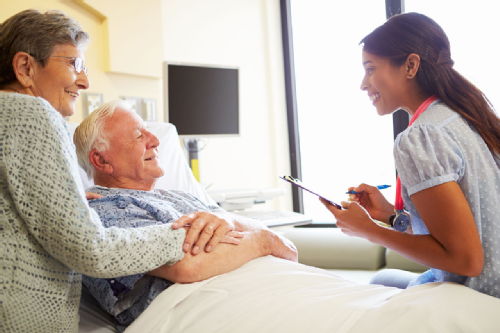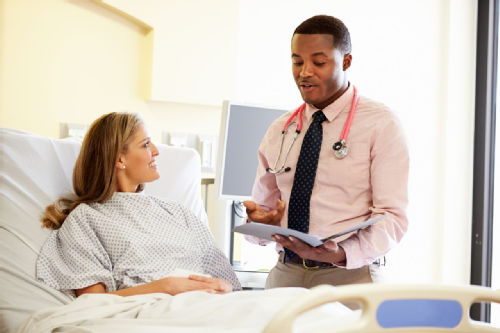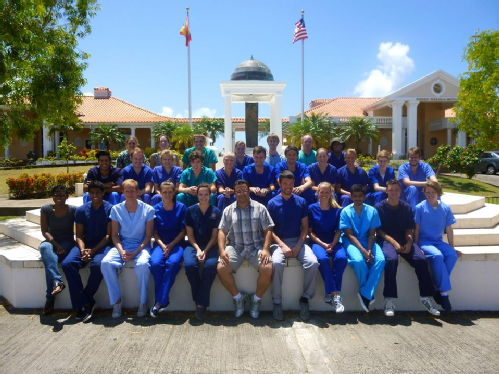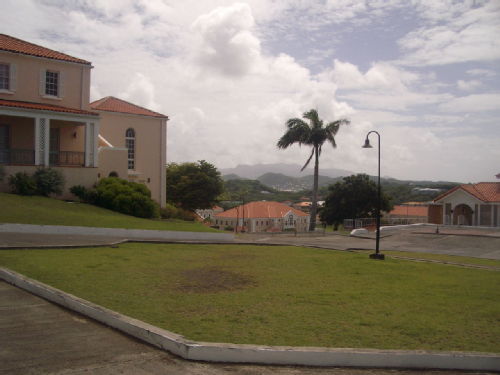All 6 entries tagged Amrit
No other Warwick Blogs use the tag Amrit on entries | View entries tagged Amrit at Technorati | There are no images tagged Amrit on this blog
March 31, 2014
In the deep end
My first week on my Orthopaedic and Anaesthetic block was dedicated entirely to Anaesthetics. For anyone who doesn’t know, an anaesthetist is a doctor whose responsibility it is to ensure a patient is asleep and comfortable during an operation. The majority of an anaesthetist’s clinical commitment is spent in theatre.

Our first proper day with our consultant was on a Tuesday. Our instructions were to meet him on the pre-op ward for the Obstetrics and Gynaecology list. Simple enough instructions, but it took us a good deal of walking around the hospital to find the right ward and by the time we had got there the anaesthetist had already seen the first patient. No worries though as he seemed to sympathise and we quickly found ourselves observing him performing a pre-operative assessment on a patient. After watching him assess the patient he turned to us and said “Okay, so now you have seen one you can do the other two between yourselves. I will see you in theatre.” I laughed, but before I had realised it wasn’t a joke, he had already left the ward.
This is what it has felt like since starting on rotation, as though you are in the deep end, and I love it! Whilst it is incredibly daunting, I wouldn’t have it any other way. I hate standing around watching people talk and do things; I much prefer to be doing it myself. Unfortunately, what I also hate is doing things wrong, and I seem to have been doing a lot of that lately, but I guess that is part of the learning process.
Fast forward two less than ideal anaesthetic pre-assessments later and we find ourselves heading to theatre. We walk into the reception area and without even opening our mouths we are greeted with “Are you medical students?” Now, yes, we are medical students but I am amazed how many people know this without me even saying it. Patients aren’t so good at telling, but hospital staff seem to be experts at knowing, it’s almost second nature. It keeps happening. How, how on earth does almost every hospital employee know we are students? Either there is a big sign over my head that I can’t see, or I don’t have as good a poker face as I’d like to think and I constantly look how I feel – a mix between a deer stuck in headlights and child in a sweet shop! Unfortunately, I think it’s the latter.
On this occasion however I am glad we were noticed as fresh-faced medical students because the first time you turn up to theatre is quite intimidating. Much like everyone who realises we are medical students, the operating theatre manager was very good in showing us where the changing rooms and operating theatres were and letting us know what to do. It is really nice how helpful people have been to us.
When you go into an operating theatre you have to wear scrubs, and if anyone hasn’t told you, they are one of the most comfortable things in the world to wear. I think a lot of anaesthetists love their job because essentially they wear pyjamas for the most of the day.

Now I’m pretty sure I’m not alone in thinking this, one of the biggest challenges of any surgical or anaesthetic rotation is finding clogs that match! Clogs are the shoes that you have to wear in an operating theatre. When you arrive in the changing room you are greeted by a box of clogs which look as though they have been filed away using the same system a toddler uses to put their toys in a toy box. It is chaos. If you are contentious enough (like you will be in your first week at least) you will spend at least five minutes searching for a pair of clogs that are the right size, the same colour and the same design. Basically a matching pair, but I am pretty certain there are no matching pairs in these boxes.
I have rambled on a bit about things that are quite non-medical in this post. Next time my post will be more medically focused. A lot of time and energy does need to be spent on learning where places are, different etiquettes in different areas and how to get the most out of our time. Now that’s out the way, I feel I can focus purely on Medicine; let the fun and games really begin!
Amrit :-)
March 27, 2014
First week on placement
The light at the end of the tunnel, the thing that has kept us all going through the exam periods is finally upon us. We have all just finished our first week of our first rotation in hospital (or general practice).
Phase II starts with Junior Rotation where we have six eight-week blocks rotating through different specialities. I am starting with Orthopaedics and Anaesthetics, so simply put bone surgery and putting patients to sleep. We do this with our ‘clinical partner’, someone in our year that we have chosen to work with. When you pick your clinical partner it is suggested you pick someone of the opposite gender. The process of asking someone to be your clinical partner is like being back in secondary school and asking someone out to a school dance (at least I imagine this is how it would feel - I went to an all-boys school). All being well you will be with your clinical partner for over two years, it doesn’t take a genius to know that you have to pick your partner wisely!

Now, Phase II is very different to Phase I. Phase I was very structured; our days were full and we knew well in advance where we have to be and at what time. It is very much like our undergraduate degrees in this respect, but perhaps a little bit more full on. Phase II, the clinical phase, is very different to this. Before we start our block we are sent emails with our timetabled teaching (these are fairly spartan when compared to our previous timetables) and the name of our consultants, that is it. The rest is up to us. The guidance on the knowledge we should have acquired before sitting our final exams is in the form of learning objectives for each block. Some objectives are specific and some are vague, I imagine we will eventually develop the skill of determining how much depth to go into, but until then I will be drowning in an endless sea of medical information. This is all very alien when contrasted with the regimented style of learning used during Phase I. This is very exciting!
For each hospital rotation/block students are allocated two consultants, in this block I have one Anaesthetic and one Orthopaedic consultant. Students have to establish what the consultants expect; for example, when you will attend their clinical sessions (such as clinics and theatre), as well as deciding what we would like to get out of the block. My partner and I have decided that what we want from the block will mostly be dictated by the learning objectives.
Queue day one; we have nothing scheduled for our block so my clinical partner and I decide it would be wise to try and arrange a meeting with both of our consultants. We just have their names, so a call to the hospital switchboard and several different (wrong) phone numbers later and we have arranged a meeting with our anaesthetist and established that our orthopaedic consultant and his secretary are both on leave. This was quite handy as it meant we could devote our first week to one consultant and specialty allowing us to find our bearings and ease into things.
More soon,
Amrit
February 10, 2014
The strange things that may go through your mind when you first visit a ward

“Hello, my name is Amritpal Sandhu, and I am a first year medical student”. Before starting Medical School I would have given anything to be able to legitimately use this phrase, but when it first became a reality I felt completely different. I’m not nervous about talking to patients; in fact I look forward to it. Before coming to medical school I had spoken to lots of patients, and even more nerve racking, lots of relatives, and it was always the best part of my day. So why did it all feel different on my first day on the wards?
At Warwick you are put on the wards for half an afternoon every week from the second term. Your experience will vary based on your group (groups of four), your consultant and, of course, the patients you get to see.
My first time on the ward as a medical student was very different to any other experience I have had on a ward. All of a sudden I found myself hyperaware of everything I did and said. For starters there is the stethoscope and what to do with it, something that still causes me quite a stir! Do I put it round my neck and feel like a pretender the whole time and pray no one mistakes me for an actual doctor? Or do I keep this piece of medical equipment out of sight, in my trouser pocket next to my phone, keys and (unused) chewing gum only to go through the ultimate struggle every time I try to extract it? I seriously envy my female colleagues who are savvy enough to carry around a small bag they can use to house this attention grabbing piece of kit, so much so I have even considered trying to bring the bum-bag back into fashion!
Then there was the decision on how to introduce myself to a patient resulting in an internal monologue that that sounded a bit like this: “Do I shake their hand? Do I use their first name or last name? Do I smile? Well, of course I do….don’t I? Wait, they’re ill, you don’t want to seem happy they’re ill! Fine, I’ll smile, but I won’t show too many teeth”. You would think I’ve never worked with patients before!
Finally, once I had gotten over myself and these quite frankly bizarre and distracting thoughts, it was time to sit down next to ‘my’ patient and take a history. For those who don’t know, a history is an interview with a patient where they tell you what has led to them being in hospital. You also need to find out about any other health problems they might have and a whole long list of other important information you need to gather. If you do it right it feels like a conversation between two people, you get it wrong you can feel like you are interrogating someone. It is a juggling act. You want to:
- Make the patient feel comfortable
- Ask all the right questions
- Get all the relevant information
- Make the conversation flow
- Think of questions that will help you eliminate the nastier things
- Try and diagnose the patient whilst you are talking to them
- And, most importantly, listen to what the patient is saying!
Halfway through the first history I took I realised I was too focused on trying to remember what was wrong with the patient that I completely forget their name! Luck was on my side however and it was written in big capital letters above their bed, let this be a lesson, being observant (or lucky, as I was) pays!

All jokes aside, the first time you are on a ward it is pretty surreal, and upon reflection a lot of the pressure I felt was created purely by me. Perhaps it is because it is drilled into us from day one that we are representing the medical profession, a profession that we are still working very hard to become a part of. Or maybe it is because no matter how many times you practice taking a history with your mates nothing can quite replicate what it is actually like with a real patient. It takes a while to realise that patients don’t expect you to know everything and are happy to explain things you don’t understand and are very forgiving when you do forget things. It takes even longer to realise that no one really notices the silly things you will obsess over and you’re not constantly in the way, even though you may feel as though you are.
Although it may sound as though it is pretty scary, as soon as you find your feet it is great fun being on the wards and talking to patients. It is a real privilege to be in the position you find yourself in as a medical student and I cannot wait to enter the clinical phase. I hope to spend a lot more of my time on the wards with patients and a lot less of my time with PowerPoint presentations and flash cards!
January 22, 2014
Teddy Bear Hospital
Our year has just entered Phase II. This is an exciting part of the course which we have all looked forward to and was very much the light at the end of the tunnel during the very intense period leading up to the end of Phase I exams. We’re now starting the clinical part of the course where the majority of teaching is done on wards and clinics.
We have just had our induction week where we are taught about the NHS in a bit more detail and advised on how to make the most of our experience in Phase II, where the learning is a lot less structured and much more student led.
We are now in the first ‘block’ of Phase II which is currently Learning from Lives; during this attachment we will meet, talk to and in some cases provide care for patients who live with life limiting diseases and disability. This block is unique in the way that it is structured.
During this six week block the cohort is split into two and we alternate between three weeks of teaching and three weeks off. I have the first three weeks off so I thought I would take this opportunity to discuss in a bit more detail some of the societies I have had the privilege to be a part of during my time here at Warwick Medical School.

First of all, the Teddy Bear Hospital society. This is a fantastic initiative where we get to help dispel some of the mystery and fear that children often associate with visiting the doctor and it also gives us as medical students the unique opportunity to interact with children and work on our communication skills. This is quite important, as although children can often be anxious about interacting with a doctor, we too, as medical students, can be quite apprehensive about interacting with children.
The Teddy Bear Hospital is a public health project aimed at three to seven year olds designed to help reduce the anxiety associated with visiting the doctor or hospital. The sessions are held at primary schools and are organised and run by Warwick Medical School students.
The children bring along their ‘sick’ teddy bear and act as parent during their visit to the Teddy Bear Doctor in the clinic. They will go through a mock A&E and explain what is wrong with their Teddy and how they became ill, which can quite often be imaginative, tragic or simply outlandish! We then take an X-ray of the teddy and explain what is wrong with them and offer them the opportunity to apply a plaster cast to their ‘pawly’ teddy.
The other stations run on the day include healthy eating, what to do in an emergency, the human body and an exercise station. For a lucky few medical students there is the opportunity to wear a teddy bear costume and welcome the children as they come into the building!
If you ever get the opportunity to volunteer with this unique society I would whole-heartedly recommend it. I have thoroughly enjoyed my experience volunteering, so much so I have now become a member of the committee. You will be in awe of some of the cuddly toys (one young man bought in a human size dragon!) and enchanted by the imagination of the children. It is a truly worthwhile experience for all involved.
January 08, 2014
Anatomy Master Class – Grenada

One of the unique parts of the course at Warwick Medical School is the opportunity to go to St George’s University in Grenada (the Caribbean) for five weeks to take part in an Anatomy Master Class working on cadavers, a fantastic experience that I was lucky enough to go on.
The trip takes place during the summer holiday between the first and second year. During the five weeks students are assigned parts of the body to dissect with an aim to produce quality specimens that will be used to teach anatomy to the students studying medicine at St George’s University. We dissected Monday to Friday from 8.00am to 3.00pm with tutorials after lunch. The teaching staff are really passionate about what they do and are excellent teachers.
During my time I dissected an arm, leg, hand and spine. On the leg, for example, I had to expose all of the major nerves and arteries that supply it, and expose the tarsal tunnel (one of my favourite bits of anatomy - a very sad thing to admit!) Those who excelled at dissection during our time there had the opportunity to carry out micro dissection using specialist tools as part of a research project
Dissecting is really challenging, whether it’s testing your fine motor skills, knowledge of the body or your patience when dissecting intricate bits of anatomy. I have certainly come away from the experience with a greater understanding and appreciation of human anatomy.
The trip isn’t all work and no play; we certainly kept ourselves entertained when not in the anatomy lab. The campus is great and we had unlimited access to the facilities on campus, including a gym and a secluded bay where we would often go to swim in the warm sea. We also took advantage of the free buses available to students to take us to the local beaches. The Gran Anse beach is beautiful and was where many of us students spent our down time.
We also went waterfall jumping, toured the local rum factory, took a catamaran to the fish market and went clubbing with the American students studying at St George’s University. One of the most enjoyable things I did was Hash Running through the rainforest; it was a fantastic way to explore the rain forest, often being forced to take tricky and challenging routes. This was just some of the stuff we did during our time, we were even lucky enough to have a traditional Grenadian breakfast and lunch put on for us by the staff!

This opportunity is available to the top scoring first year students who take a voluntary entry anatomy exam during the second term. Students have to arrange and pay for their own travel to and from Grenada as well as food and entertainment whilst out there. St George’s University puts us up for free in their student accommodation.
Whilst I have come away knowing that I do not wish to pursue a career in medical anatomy it is an invaluable experience. If you ever get the chance to go I would thoroughly recommend it!

 Sarah Hill
Sarah Hill

 Please wait - comments are loading
Please wait - comments are loading
 Loading…
Loading…